Achieve Optimal Joint Health: Masters Powerlifting Guide
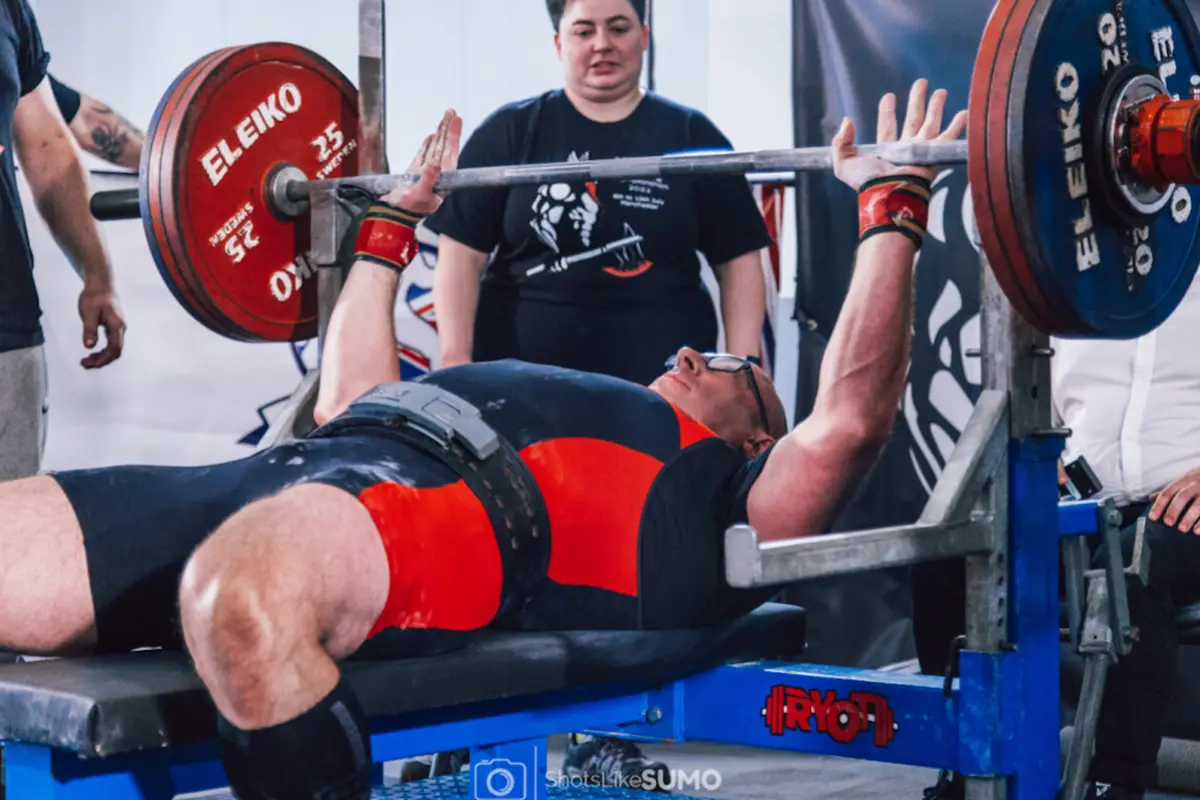
What's In This Article
- Key Highlights
- Introduction
- Joint Health in Masters Powerlifting
- Pre-Workout Mobility Rituals for Joint Protection
- Training Modifications for Masters Powerlifters
- Post-Workout Recovery for Joint Health
- Regular Health Assessments
- Identifying and Managing Pain
- Conclusion
- Frequently Asked Questions
- References
- Resources
Key Highlights
- Powerlifting can offer numerous benefits for older adults, including improved bone density, increased muscle mass, and enhanced joint health.
- Proper form, adequate rest, and gradual progression are essential for maintaining healthy joints when lifting heavy weights.
- Professional powerlifters may have different recovery capabilities and joint health due to the use of performance-enhancing drugs.
- Balancing training volume, focusing on technique, and practising mobility exercises can help reduce the risk of joint injuries in powerlifting.
- Building a solid foundation of strength, focusing on functional movements, and listening to your body is vital to maintaining joint health in powerlifting.
Introduction
Starting powerlifting may feel overwhelming, especially for older adults. Powerlifting isn't just for the young and super fit; it focuses on strength, technique, and progress suitable for everyone.
Dr Maren S. Fragala and colleagues, in a position statement from the National Strength and Conditioning Association, assert that "A properly designed resistance training program can counteract the age-related changes in contractile function, atrophy, and morphology of aging human skeletal muscle."
This guide discusses joint health in masters powerlifting, including its importance, common issues, warm-up techniques, training modifications, and more. It emphasizes making adaptations during workouts and regular health check-ups.
We cover listening to your body and managing pain. Whether you're a seasoned competitor or a new powerlifter, this guide offers valuable tips for looking after your joint health.
Joint Health in Masters Powerlifting
- Joint health describes the structural integrity and mobility of body joints, encompassing the articulation between bones that enables physical movement.
- Powerlifting, which involves heavy lifting and repetitive movements, can affect this aspect of muscular-skeletal health. Hence, taking precautions is essential to prevent injuries and ensure long-term success in the sport.
Several factors can impact this aspect of health during powerlifting, and understanding the most common causes of pain is crucial.
- One of the main risk factors is repetitive stress on the joints. Powerlifting involves performing the same movements repeatedly, such as squats, bench presses, and deadlifts. Over time, this repetitive stress can lead to wear and tear on the joints, potentially causing pain and inflammation.
- Range of motion is another important factor. Powerlifters need a sufficient range of motion in their joints to perform the required movements effectively and safely. Limited range can lead to compensatory movements and improper form, increasing the risk of injury.
- Age also comes into the equation. The natural ageing process can change joint integrity, flexibility, and strength. Older adults may have reduced muscle mass and bone density, further impacting the issue. Masters powerlifters must be mindful of this and take appropriate measures in their training and recovery.
To ensure optimal longevity in powerlifting, it is essential to implement strategies that reduce the risk of injuries and promote efficient muscular-skeletal function.
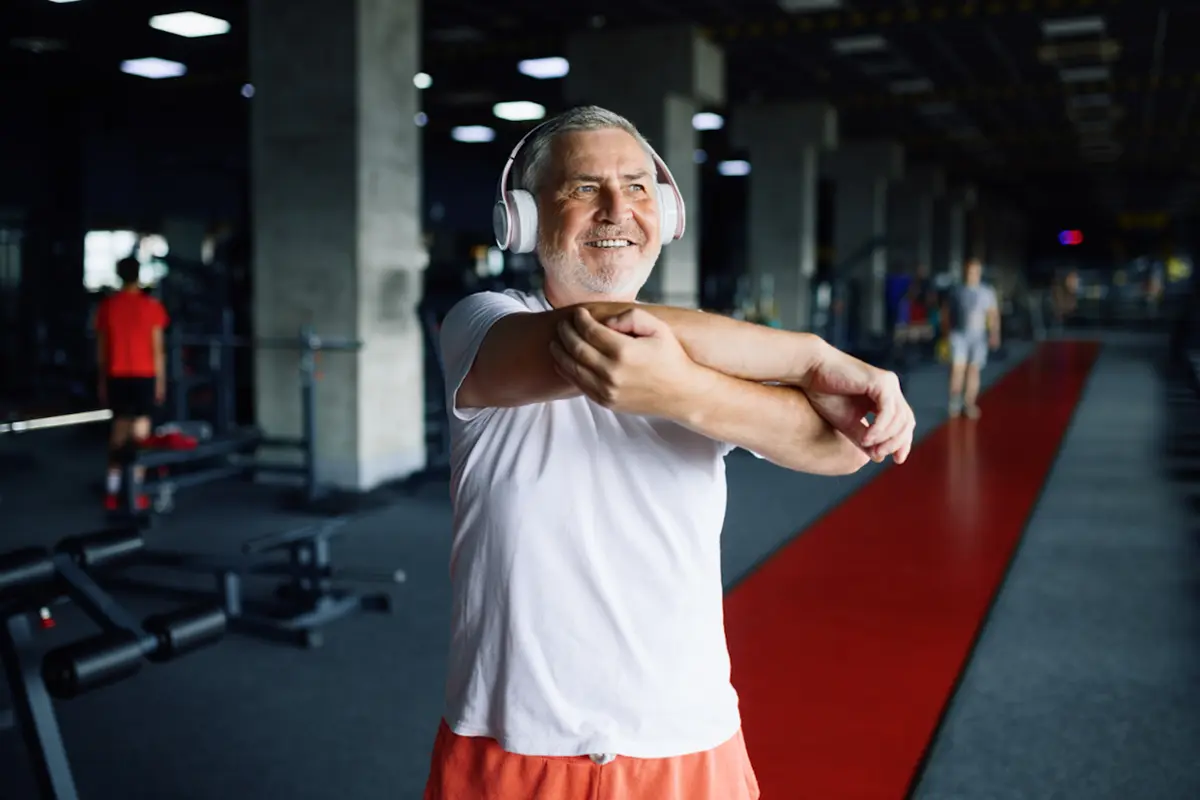
The Importance of Joint Health for Powerlifters
Maintaining healthy joints is essential for powerlifters, as it directly impacts their functional capacity, overall health, and quality of life.
- Powerlifting is a demanding sport that requires strength, stability, and mobility in the joints to perform the necessary movements effectively and safely.
- Healthy joints are crucial for powerlifters to achieve optimal performance and prevent injuries.
- Proper skeletal function allows powerlifters to generate maximum force, stabilize their bodies during lifts, and maintain proper form throughout the movements.
- Strong and stable joints also contribute to overall body stability and balance, reducing the risk of falls and other accidents during training or competition.
Healthy joints also play a significant role in overall well being and quality of life. Powerlifting is not just about lifting heavy weights; it is a lifestyle that promotes physical fitness, mental discipline, and personal growth. By maintaining muscular-skeletal health, powerlifters can continue participating in the sport and enjoy its benefits for many years.
Dr. Tiago M. Barbosa of the Research Centre in Sports, Health and Human Development, Portugal, and his research team emphasize the effectiveness of strength-based resistance training for older adults, even with high loads. They stress the importance of careful supervision by coaches, noting that "careful supervision by qualified personnel with sufficient experience is essential."
Common Joint Issues in Powerlifting
Powerlifting, though immensely beneficial for muscle strength, can pose specific challenges to joint health, especially in older athletes.
- Common joint issues in powerlifting often include overuse injuries such as tendinopathies in the shoulders, elbows, and knees.
- These result from repetitive stress on the joints, leading to discomfort and reduced functional capacity.
- Strained ligaments and muscle tears are also prevalent, primarily in the lower back, due to heavy weights and improper lifting techniques.
Masters powerlifters need to address these issues proactively to ensure longevity in the sport. Preventive measures and seeking timely rehabilitation can significantly mitigate the risk of these common issues, allowing athletes to continue reaping the health benefits of powerlifting well into their later years, arguably the best way to maintain joint health.
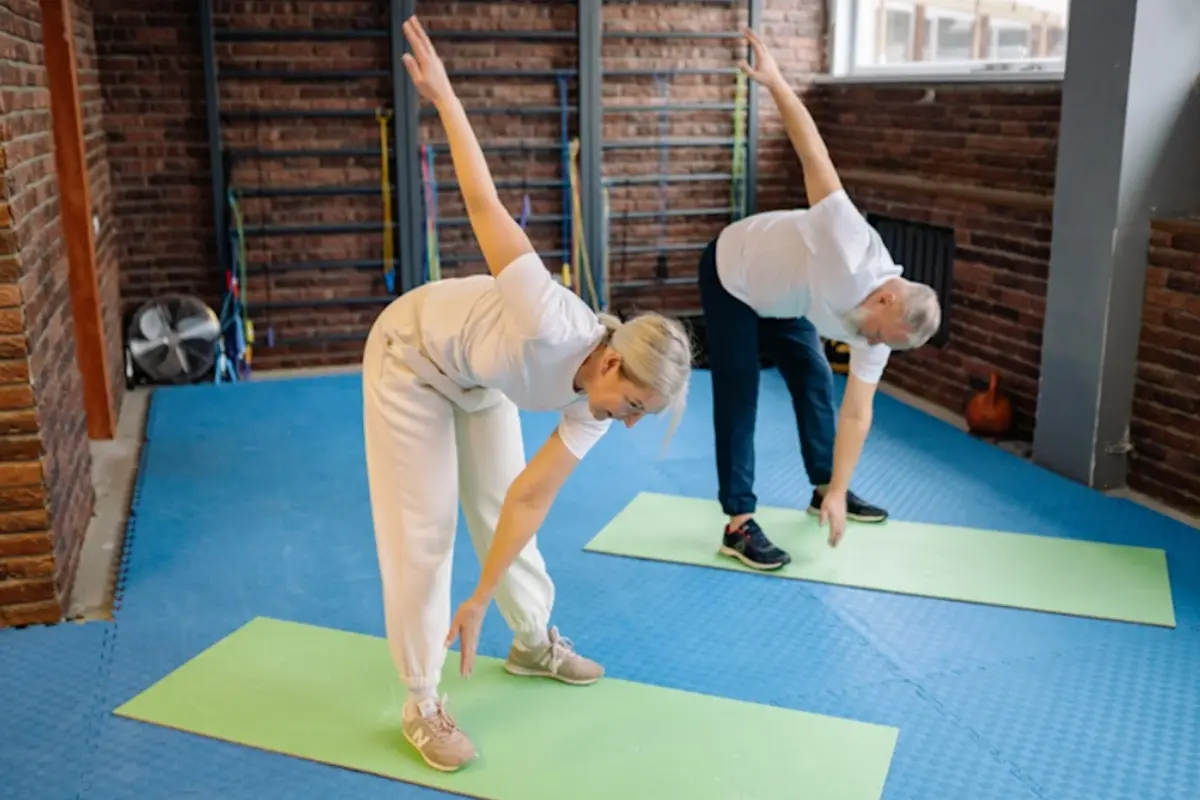
Pre-Workout Mobility Rituals for Joint Protection
A proper warm-up is crucial for protecting the body during workouts. Dynamic stretching and mobility exercises targeting key joints enhance flexibility and reduce injury risk. Activation exercises prepare muscles for heavy lifts, minimizing joint stress and optimizing performance.
Older athletes may need longer warm-ups and a more gradual weight increase during sessions (Vandervoort, 2009).
Proper Warm-Up for Joint Mobilization
- Proper warm-up for joint mobilization is crucial for masters powerlifters to optimize performance and prevent injuries. This helps enhance the flexibility of various muscle groups, especially around the joints and prepares the body for the upcoming training session (Pagan et al., 2024).
- Powerlifters can reduce the risk of discomfort and pain by gradually increasing the range of motion and blood flow to the muscles.
- Proper technique during warm-ups fosters better movement patterns. Therefore, adhering to a systematic warm-up protocol is imperative for masters powerlifters striving for optimal health and peak performance.
Essential Stretches
- To maintain joint health in powerlifting, incorporating dynamic stretches like leg swings, arm circles, and hip rotations before a workout can improve the range of motion and prepare the joints for heavier lifts.
- Static stretches such as quadriceps, hamstring, and shoulder stretches after a workout help reduce muscle tension and contribute to overall recovery.
- These stretches help maintain the elasticity of the muscles and connective tissues around the joints, reducing the risk of potential injuries.
Training Modifications for Masters Powerlifters
Training modifications for masters powerlifters aim to maintain joint health and performance as they age. Adjusting training volume, incorporating rest periods, and prioritizing proper form over maximum weight is crucial.
Dr Dennis Villareal, a researcher in geriatrics, emphasizes the importance of strength training, arguing that it plays a crucial role in maintaining lean muscle mass and bone density as people age.
Masters powerlifting demands a careful approach. At Sportive Tricks, our coaches specialize in strength training for older adults, delivering personalized programs that prioritize gradual progression and account for age-related recovery dynamics.
This targeted strategy helps prevent injuries while maintaining and enhancing the functional capacity of competitive lifters.
Reducing Lifting Volume
Older powerlifters can lower training volume to maintain healthy joints and prevent overuse injuries.
- Masters athletes need more recovery time as muscles recover slower and joints wear down faster as we age.
- Decreasing training volume gives more time for healing, helping joint recovery and overall well-being.
- This also enables better workouts focusing on form to prevent discomfort and injury.
- Customizing volume reduction strategies is crucial for older powerlifters to sustain longevity and improve joint health in the future.
Longer Rest Periods
In powerlifting, especially for masters athletes, more extended rest periods are used for optimal recovery.
- Our bodies require more time to recuperate from intense movements as we age.
- More extended rest periods between sets and training sessions can reduce the risk of overuse injuries and allow for better recovery.
- Adequate recovery time in training programs can significantly improve muscle strength and physical capabilities.
- This approach also supports the gradual progression of strength training without overstressing the joints.
Focus on Technique
Powerlifting technique is more important than weight for master athletes.
- Correct form lowers injury chances and engages muscles more effectively.
- As athletes age, they should focus on form and range of motion instead of always lifting heavier weights.
- This approach helps in building muscle strength continuously while reducing strain.
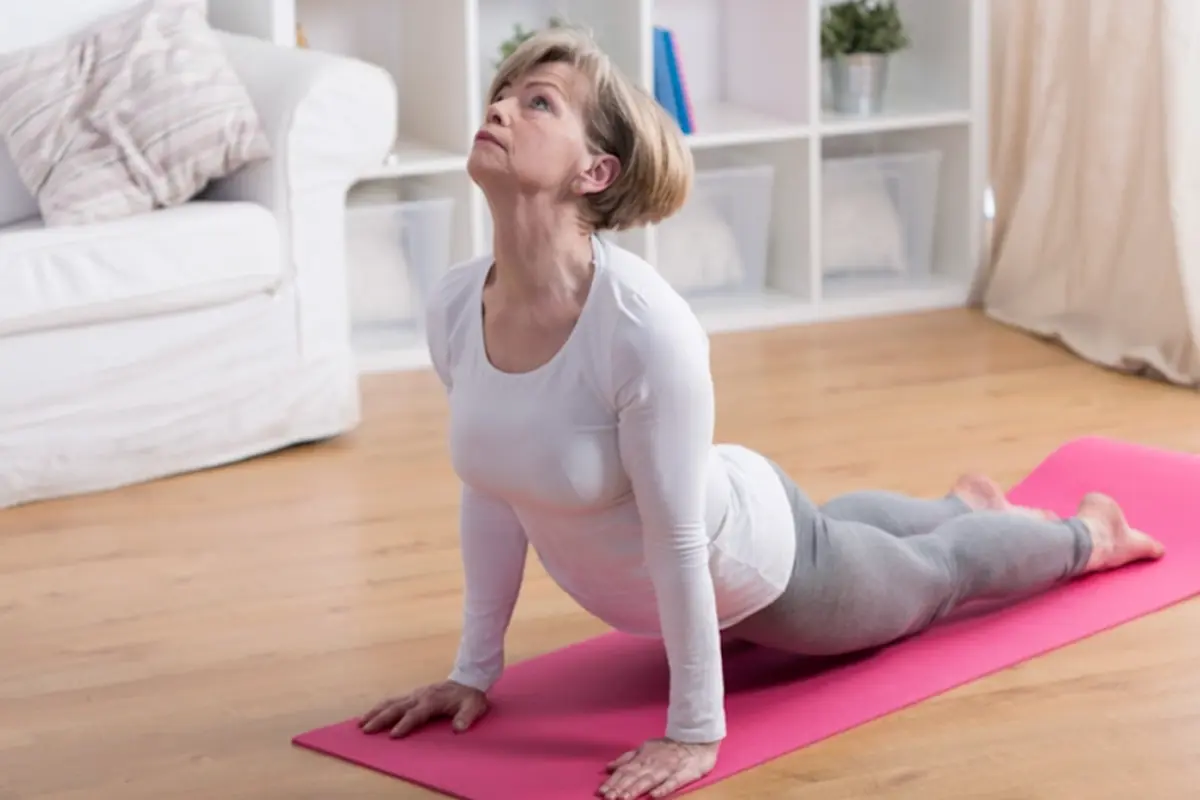
Post-Workout Recovery for Joint Health
After completing a powerlifting session, post-workout recovery is crucial for maintaining optimal joint health, especially for masters athletes. A 2023 scoping review by Hayes et al. investigated exercise-induced muscle damage and recovery from resistance exercise in older adults. The review found that the recovery of muscle strength can take up to 168 hours (7 days) in some cases.
- Active recovery techniques, such as light cardiovascular activities and low-impact exercises, can help enhance blood flow and reduce muscle soreness.
- Quality sleep is vital as it allows the body to repair and rebuild tissues, contributing to overall recovery.
- Rest days should be incorporated into the training schedule to prevent overuse, injury, and fatigue.
Active Recovery Techniques
Active recovery helps older powerlifters keep joints healthy and decrease swelling. It boosts blood flow, removes waste, lessens soreness, and speeds healing.
- Walking, swimming, biking and aerobic workouts are great.
- Mobility exercises and yoga improve flexibility.
- Cold packs or alternating hot/cold water reduces inflammation.
Importance of Quality Sleep
Quality sleep is crucial for joint recovery in older powerlifters (Chun et al., 2018).
- During sleep, the body repairs tissues, including joints, aiding recovery.
- Inadequate sleep can increase inflammation and pain perception, worsening muscular-skeletal issues.
- Sufficient sleep releases growth hormones essential for tissue repair and well-being.
- Improving the sleep environment, maintaining a consistent schedule, and using relaxation techniques can enhance sleep quality, aiding recovery and performance.
Regular Health Assessments
Regular health assessments are recommended for older powerlifters to monitor joint health and overall well-being as their risk of issues increases, underscoring the need for proactive evaluation.
These assessments help the early detection of joint problems, facilitating timely intervention. They also help powerlifters adjust training programs based on physical changes.
Monitoring Joint Health
- Regular check-ups and monitoring can help catch any joint issues early on.
- Paying attention to persistent pain or discomfort is crucial.
- Older powerlifters can address problems promptly and adjust training by staying aware of joint health changes.
The Role of Physiotherapy
- Older athletes might face stiffness, limited motion, or injuries, and physical therapists use hands-on techniques and exercises to boost mobility and function.
- They create custom workout plans to strengthen muscles around joints, preventing injuries and promoting joint health.
- Physiotherapy also corrects muscular-skeletal imbalances that may cause problems.
- Therapists educate powerlifters, helping them understand their bodies and make wise training choices for long-term joint health improvement.
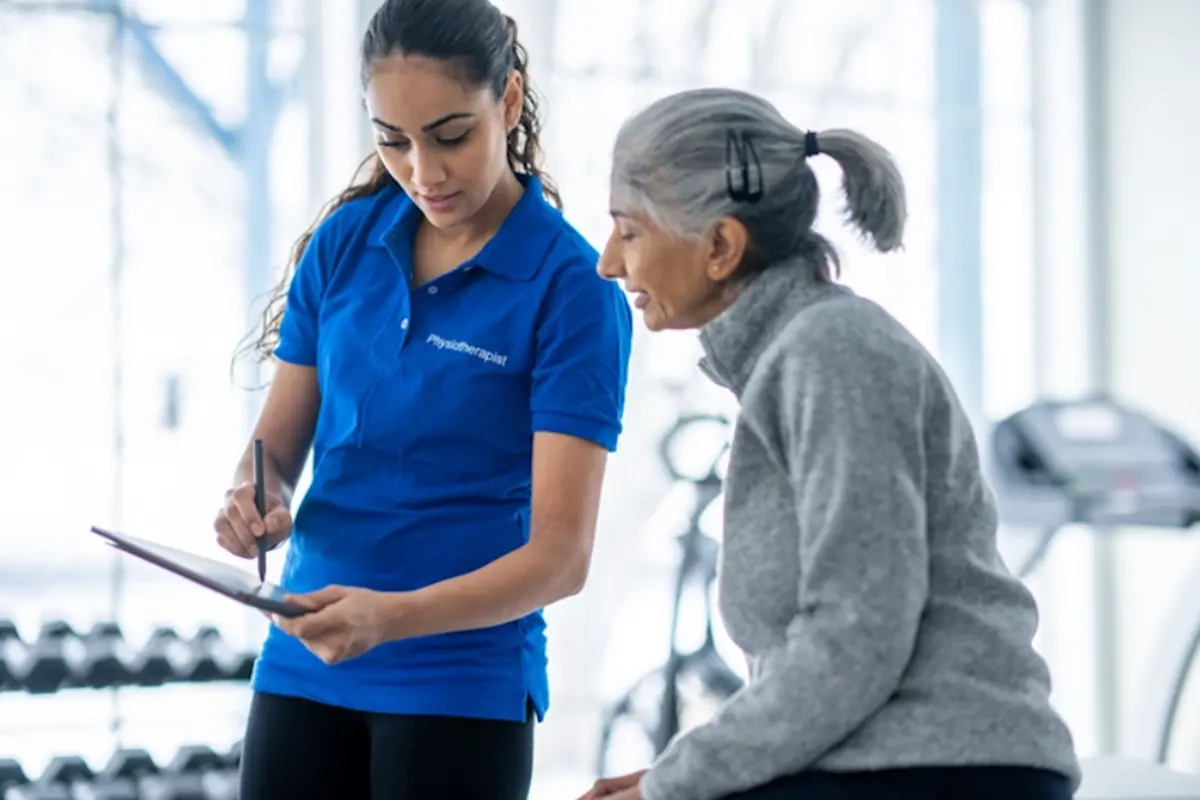
Identifying and Managing Pain
Identifying and managing joint pain is crucial for masters powerlifters to sustain joint well being. Learning to tune into the body's signals helps to prevent severe injuries.
Powerlifters should prioritize rest and medical care when experiencing persistent pain rather than pushing through it. Proper pain management involves implementing rest and seeking professional assistance.
Ignoring pain could lead to long-term damage and hinder lifting performance. Therefore, lifters must listen to their bodies and respond appropriately, ultimately supporting their joint well being and athletic longevity.
Distinguishing Normal Fatigue from Injury Pain
Understanding the difference between normal fatigue and injury pain is crucial.
- Normal fatigue is expected during intense training, manifesting as temporary discomfort dissipating with rest.
- Injury pain is persistent and often worsens with movement or specific exercises.
Masters powerlifters should be attentive to any pain that affects their range of motion or daily activities. Correctly gauging the sensation can help identify potential issues, and seeking professional guidance when in doubt is recommended.
Dealing with Pain
When experiencing pain, it's crucial to listen to your body.
- Distinguish between normal fatigue and injury pain.
- If the pain persists or worsens, seeking professional consultation is recommended.
- Rest alone may not address underlying issues
- Prioritize long-term joint health over short-term training gains.
Conclusion
For master powerlifters, understanding joint health importance, addressing common issues, and implementing proper pre-workout rituals and training modifications are crucial. Post-workout recovery techniques, regular health assessments, and listening to your body help prevent injuries. Consulting professionals like physiotherapists, when needed, is essential for a successful powerlifting experience.
Frequently Asked Questions
What are the most common causes of joint pain?
Common causes of joint pain include osteoarthritis (wear-and-tear of cartilage), rheumatoid arthritis (an autoimmune condition), injuries, gout, bursitis, and tendinitis. Age, obesity, previous injuries, and repetitive stress can also contribute to pain. In some cases, infections or other underlying medical conditions may be responsible.
How can I improve my joint health naturally?
To naturally improve joint health, maintain a healthy weight to reduce joint stress. Exercise regularly, focusing on low-impact activities like swimming or cycling. Eat an anti-inflammatory diet rich in omega-3 fatty acids, fruits, and vegetables. Stay hydrated and consider supplements like glucosamine and chondroitin. Practice good posture and use proper techniques when lifting or performing repetitive tasks.
What exercises are best for joint health?
Low-impact exercises are best for joint health. These include swimming, water aerobics, cycling, and elliptical training. Strength training helps build muscles that support joints. Yoga and tai chi improve flexibility and balance. Walking is also beneficial. Always warm up before exercising and start slowly, gradually increasing intensity. If you have existing issues, consult a doctor or physical therapist for personalized recommendations.
When should I see a doctor about joint pain?
See a doctor if the pain is severe, lasts more than a few days, or is accompanied by swelling, redness, or warmth around the joint. Seek immediate medical attention if you have sudden intense pain, deformity, or inability to move the joint following an injury. Also, consult a doctor if you experience unexplained weight loss, fever or if the pain significantly interferes with daily activities.
Are there specific foods that can help reduce joint inflammation?
Yes, certain foods can help reduce inflammation. Include fatty fish (salmon, mackerel) rich in omega-3s, colorful fruits and vegetables high in antioxidants, nuts and seeds, olive oil, and whole grains in your diet. Green tea, turmeric, and ginger have anti-inflammatory properties. Limit processed foods, sugary items, and excessive red meat consumption. Some people find that avoiding nightshade vegetables (tomatoes, eggplants, peppers) helps, though scientific evidence is limited.
References
- Chun, M. Y., Cho, B. J., Yoo, S. H., Oh, B., Kang, J. S., & Yeon, C. (2018). Association between sleep duration and musculoskeletal pain: The Korea National Health and Nutrition Examination Survey 2010–2015. Medicine, 97(50), e13656.
- Hayes, E. J., Stevenson, E., Sayer, A. A., Granic, A., Hurst, C., & Dismore, L. (2021). Older Adults' Knowledge and Perceptions of Whole Foods as an Exercise Recovery Strategy. Frontiers in Nutrition, 8, 748882.
- Hayes, E. J., Stevenson, E., Sayer, A. A., Granic, A., & Hurst, C. (2023). Recovery from Resistance Exercise in Older Adults: A Systematic Scoping Review. Sports Medicine Open, 9(51).
- Pagan, J. I., et al. (2024). Task-specific resistance training adaptations in older adults: comparing traditional and functional exercise interventions. Frontiers in Aging, 5, 1335534.
- Vandervoort, A. A. (2009). Potential benefits of warm-up for neuromuscular performance of older athletes. Exercise and Sport Sciences Reviews, 37(2), 60-65.